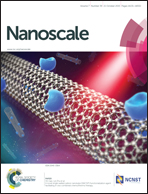Understanding the electric field control of the electronic and optical properties of strongly-coupled multi-layered quantum dot molecules
Abstract
Strongly-coupled quantum dot molecules (QDMs) are widely employed in the design of a variety of optoelectronic, photovoltaic, and quantum information devices. An efficient and optimized performance of these devices demands engineering of the electronic and optical properties of the underlying QDMs. The application of electric fields offers a way to realise such a control over the QDM characteristics for a desired device operation. We performed multi-million-atom atomistic tight-binding calculations to study the influence of electric fields on the electron and hole wave function confinements and symmetries, the ground-state transition energies, the band-gap wavelengths, and the optical transition modes. Electrical fields parallel ( ) and anti-parallel (
) and anti-parallel ( ) to the growth direction were investigated to provide a comprehensive guide for understanding the electric field effects. The strain-induced asymmetry of the hybridized electron states is found to be weak and can be balanced by applying a small
) to the growth direction were investigated to provide a comprehensive guide for understanding the electric field effects. The strain-induced asymmetry of the hybridized electron states is found to be weak and can be balanced by applying a small  electric field, of the order of 1 kV cm−1. The strong interdot couplings completely break down at large electric fields, leading to single QD states confined at the opposite edges of the QDM. This mimics a transformation from a type-I band structure to a type-II band structure for the QDMs, which is a critical requirement for the design of intermediate-band solar cells (IBSCs). The analysis of the field-dependent ground-state transition energies reveals that the QDM can be operated both as a high dipole moment device by applying large electric fields and as a high polarizability device under the application of small electric field magnitudes. The quantum confined Stark effect (QCSE) red shifts the band-gap wavelength to 1.3 μm at the 15 kV cm−1 electric field; however the reduced electron–hole wave function overlaps lead to a decrease in the interband optical transition strengths by roughly three orders of magnitude. The study of the polarisation-resolved optical modes indicates the benefits of applying small electric fields, which leads to an isotropic polarisation response, a desirable property for semiconductor optical amplifiers (SOAs).
electric field, of the order of 1 kV cm−1. The strong interdot couplings completely break down at large electric fields, leading to single QD states confined at the opposite edges of the QDM. This mimics a transformation from a type-I band structure to a type-II band structure for the QDMs, which is a critical requirement for the design of intermediate-band solar cells (IBSCs). The analysis of the field-dependent ground-state transition energies reveals that the QDM can be operated both as a high dipole moment device by applying large electric fields and as a high polarizability device under the application of small electric field magnitudes. The quantum confined Stark effect (QCSE) red shifts the band-gap wavelength to 1.3 μm at the 15 kV cm−1 electric field; however the reduced electron–hole wave function overlaps lead to a decrease in the interband optical transition strengths by roughly three orders of magnitude. The study of the polarisation-resolved optical modes indicates the benefits of applying small electric fields, which leads to an isotropic polarisation response, a desirable property for semiconductor optical amplifiers (SOAs).


 Please wait while we load your content...
Please wait while we load your content...